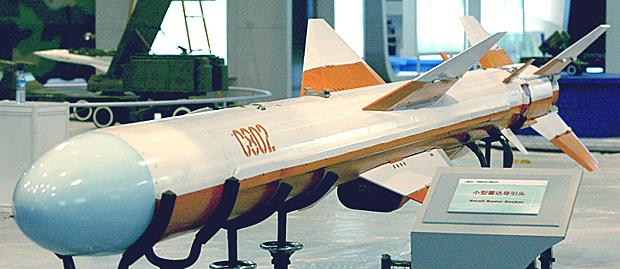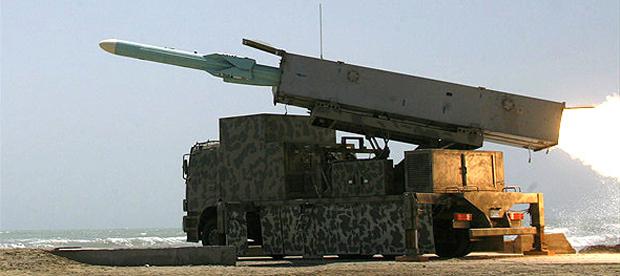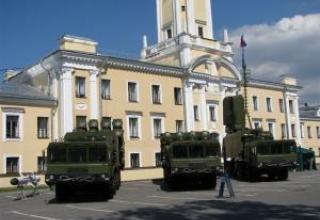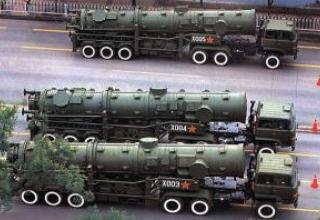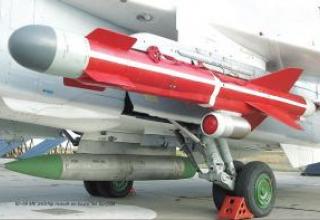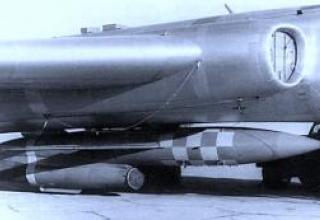The Yingji-82 medium range tactical anti-ship missile (Yingji-82 Attack Eagle, export designation C-802) is an upgraded version of the YJ-81 (C-801A) anti-ship missile and is designed to equip surface ships, submarines, coastal batteries and aircraft.
The C-802 was developed by the China Electro-Mechanical Technology Academy (CHETA) located in Haidiang. The C-802 was first demonstrated in 1989.
It is a part of the armament of the FB-7 supersonic bomber, Q-5 fighter-bomber and a promising fourth generation multi-purpose fighter J-10 developed by Chinese companies Chengdu and Shenyang.
The Chinese Navy missiles C-801 and C-802 are armed with destroyers of classes: Luhai 167, Luhu 112, Luda 166, Luda 109, frigates of classes: Jianghu-III (Type 053HT), Jiangwei, missile boats of class Houjian. Type 039 (Song Class) diesel-electric submarines are capable of launching C-802 missiles. In 2005, an upgraded version of the missile was developed, designated C-802A.
Iran planned to purchase a large batch of C-802 and C-801 missiles in China. Partially these purchases were made, but later, under the pressure of the US, China was forced to refuse to continue further supplies to Iran in exchange for the expansion of military and economic ties with the US in the form of financial aid and technology exports worth at least 7 billion dollars. However, in October 2000, Iran announced an eight-day maritime exercise in the Strait of Hormuz and Gulf of Oman, during which a new version of the C-802 missile was tested. This missile was the result of a joint C-802 modernization programme with the DPRK (see photo).
The missile is currently in service with the naval forces of Algeria, Bangladesh, Indonesia, Iran, Pakistan, Thailand and Myanmar.
In the west, the missile was designated CSS-C-8 SACCADE.
On the basis of C-802, a new anti-ship missile YJ-83 has been developed, which features an extended range up to 200 km, a new control system and a supersonic speed (M=1.5) at the final stretch of the trajectory.
Composition:
C-802 missile differs from its prototype - C-801A by using turbojet engine instead of solid fuel. Thanks to this, the maximum effective range of the missile has been increased by 50% and reached 120 kilometers.
C-802 rocket (see the scheme) is made on the normal aerodynamic scheme with folding cross-shaped triangle wing of small elongation, air intake TRD is located on the lower surface of the missile body. Rockets with ship and ground launch have a solid fuel accelerator equipped with developed plumage. The missile is equipped with an active monopulse radar CNS operating in the range of 10-20 GHz and equipment for receiving correction commands from the carrier, which is used in the initial section of the trajectory to capture the target by the homing head. The developer offers options C-802 additionally equipped with GLONASS/GPS satellite navigation subsystem. The combat unit is armor-piercing and blast furnace.
The probability of hitting the target, even in the conditions of enhanced counteraction from the enemy is 75%. The missile's low EPR, low flight altitude, and interference suppression complex make it difficult to intercept the missile. The flight altitude on the marching section of the trajectory is 20-30m, on the final section of the trajectory the missile is reduced to a height of 5-7 meters and performs anti-aircraft maneuver.
For coastal defense purposes, the complex is placed on the chassis of a truck, the launcher carries 3 containers of rectangular cross-section, located on a lifting frame. Each battery includes four launchers, a radar station and a support vehicle.
Characteristics:
| Starter weight, kg | 715 |
| Weight of combat unit, kg | 165 |
| Length of launch accelerator rocket, mm | 6392 |
| Body diameter, mm | 360 |
| Wingspan, mm | 1180 (720 folded up) |
| Firing range, km | 15 - 120 (up to 180 for C-802A) |
| Flight Speed | 0.8-0.9М |
| Flight altitude, m | 50- 120 |
Testing:
The first combat use of the S-200 SAM system took place in 1982 in Syria, where at a distance of 190 km the E-2C "Hawkeye" DRLO was shot down, after which the American aircraft carrier fleet withdrew from the Lebanese coast. The Libyan S-200 complexes took part in repulsing an attack by American FB-111 bombers and possibly shot down one bomber.
On the basis of the 5B28 anti-aircraft missile of the S-200B complex a hypersonic flying laboratory "Cold" has been created to test hypersonic direct-flow air jet engines. The choice of this missile was based on the fact that the parameters of its flight path were close to those required for flight tests of the Hyper-Sonic Propulsion System. It was also considered important that the missile had been decommissioned and its cost was low. The missile's combat unit was replaced by the head compartments of the GLL "Kholod", which housed the flight control system, a liquid hydrogen tank with displacement system, a hydrogen flow control system with measuring devices and, finally, the experimental HPVRD E-57 of axially symmetric configuration.
